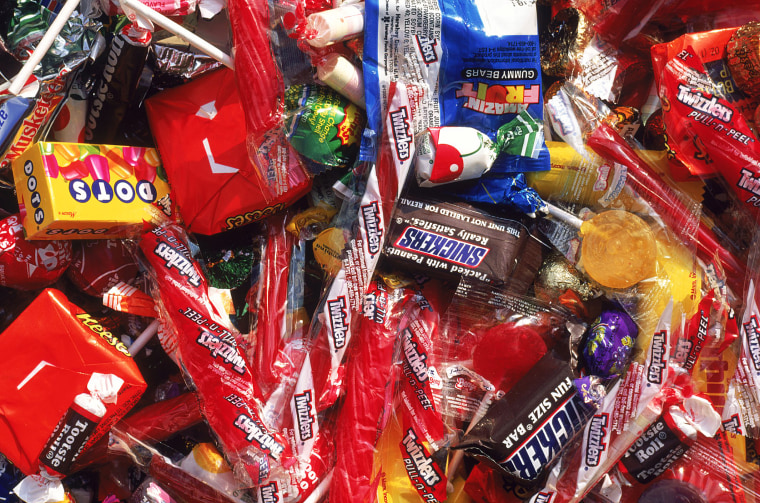It’s Halloween week, which means candy is everywhere. But if you're trying to stay healthy, the holiday doesn't have to be your (or your dentist's) worst nightmare.
While candy falls solidly in the “treat” category, a healthy diet can include some candy, if you choose.
But don’t be fooled into thinking that chocolate is a “healthier” candy choice. While valid studies do link dark chocolate intake with positive cardiovascular effects, that connection is totally deflated when you read beneath the headlines that the amount you’d need to consume daily for a teeny effect are many hundreds of calories every day. (And you can find those same healthful antioxidants in many other nutrient rich foods in much higher amounts). Chocolate, however, does tend to stick less to your teeth than other candy because it’s a combination of sugar and fat.
So what’s the bottom line? Choose wisely for a candy you enjoy, and not for a potential health benefit.
Below are some of my top tips for a fun (and healthier) Halloween with you and your family.
Buy new toothbrushes for the whole family – and use them for the first time after trick or treating.
To avoid temptation and over-indulging post-Halloween, buy candy that you DON’T love and can be a trigger for you – it’s much easier to resist (and give away).
Always look for “fun-size” candy bars, which are all around 100 calories; it’s the easiest portion control. Avoid mini “bite-sized” candy bars – which are around 40 calories each, and much harder to stick with a modest portion.
Make a plan with your children before the trick or treating to share some of their candy with those who would enjoy a gift of candy – like veterans groups, children’s hospitals, or shelters.

And if you’re looking for a few conversation starters while you're out and about this Halloween, check out these fun facts about candy I dug up:
-Twizzlers are one of the oldest candy products around. Created in 1845, it was in the original licorice flavor, with the popular strawberry arriving on shelves in the 1970s.
-Snickers and Lollipops got their names from horses at the family founders’ farms.
-3 Musketeers was originally packaged as three pieces – vanilla, strawberry, and chocolate. Only the chocolate version remains today, and in a single piece.
-The white paper sticking out of a Hershey Kiss is called a “plume”; pulling on it opens the wrapper. From 1907-1921, each kiss was wrapped by hand until automation took over.
-Cotton candy (originally known as “cotton floss”) was invented by a dentist, William James Morrison.
-Roughly half of Americans enjoy candy corn (formerly known as “chicken feed”). Another 25 percent don’t like it, while the remaining 25 percent are not fans, but feel it’s part of the Halloween tradition.
-Tootsie Rolls were created in 1907, and became a military favorite in World War II, because of its extreme durability in all weather conditions. It was named after the inventor’s daughter Clara – whose nickname was “Tootsie”.
-Pop rocks are made by exposing a syrup mix to a high pressure carbon dioxide gas and then cooling it. As the candy dissolves in your mouth, the gas is released with a resulting “fizzy” taste. And, it’s a myth that eating pop rocks and drinking soda will explode in your stomach!
Madelyn Fernstrom, Ph.D. is NBC News' health editor. Follow her on Twitter @drfernstrom.
